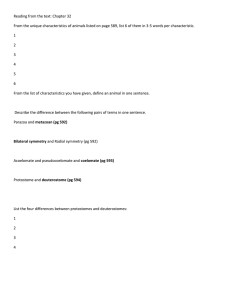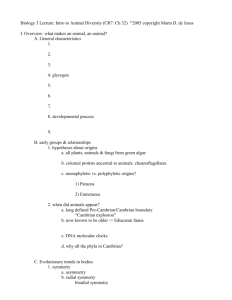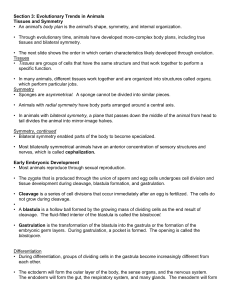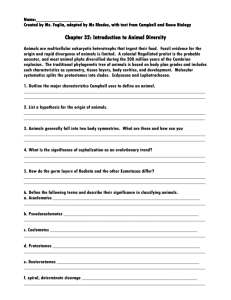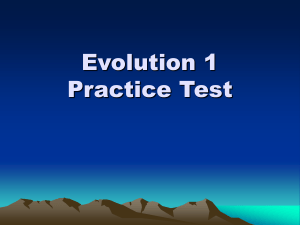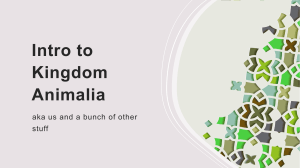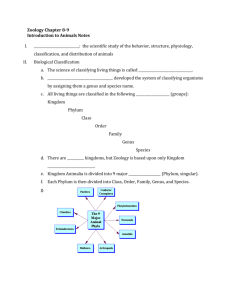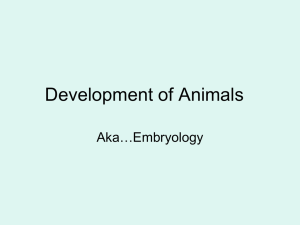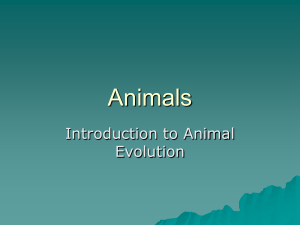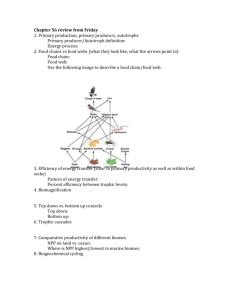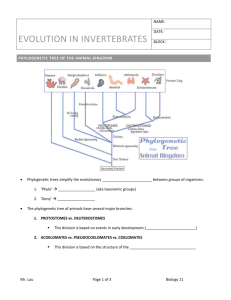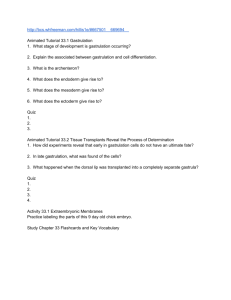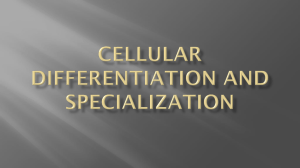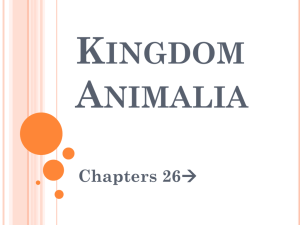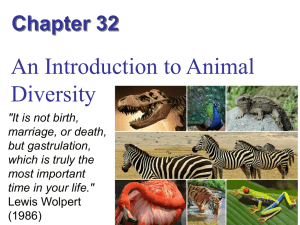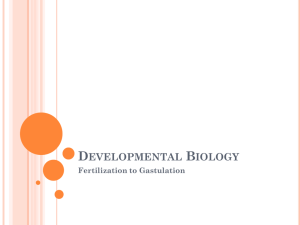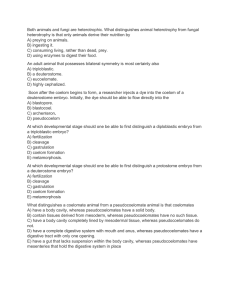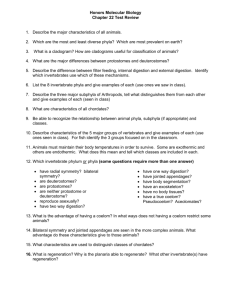INTRODUCTION TO ANIMALS
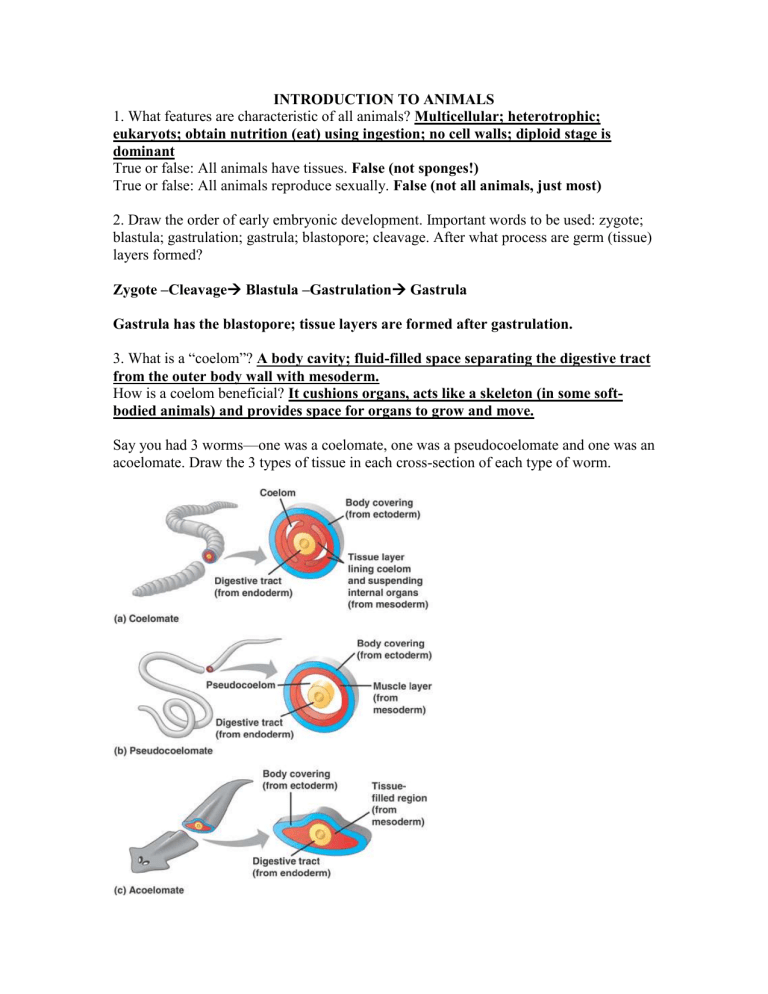
INTRODUCTION TO ANIMALS
1. What features are characteristic of all animals? Multicellular; heterotrophic; eukaryots; obtain nutrition (eat) using ingestion; no cell walls; diploid stage is dominant
True or false: All animals have tissues. False (not sponges!)
True or false: All animals reproduce sexually. False (not all animals, just most)
2. Draw the order of early embryonic development. Important words to be used: zygote; blastula; gastrulation; gastrula; blastopore; cleavage. After what process are germ (tissue) layers formed?
Zygote –Cleavage
Blastula –Gastrulation
Gastrula
Gastrula has the blastopore; tissue layers are formed after gastrulation.
3. What is a “coelom”? A body cavity; fluid-filled space separating the digestive tract from the outer body wall with mesoderm.
How is a coelom beneficial? It cushions organs, acts like a skeleton (in some softbodied animals) and provides space for organs to grow and move.
Say you had 3 worms—one was a coelomate, one was a pseudocoelomate and one was an acoelomate. Draw the 3 types of tissue in each cross-section of each type of worm.
See slide 18 of Lecture 3 for this diagram.
What do all three worms have in common? They’re all triploblastic !
4. There are 4 ways animals are defined by their body plan. What are those four ways?
What different possibilities of body plan fit under each?
1. Symmetry a. Radial symmetry b. Bilateral symmetry
2. Organization of tissues (or germ layers) a. b.
Diploblastic
Triploblastic
3. Type of body cavity (or coelom)
4. a. b. c.
Pattern of embryonic development (fate of the blastopore) a.
Coelomates
Pseudocoelomates
Acoelomates
Deuterostome b. Protostome
5. Consider the different clades. Are the organisms in each clade deuterostomes or protostomes? What are they known for?
Name of Clade
Deuterostomia
Lophotrochozoa
Ecdysozoa
Deuterostome/Protostome? Known for?
Deuterostomes
Protostomes
Protostomes
Being vertebrates…
Ciliated larva
Ecdysis (molting)
